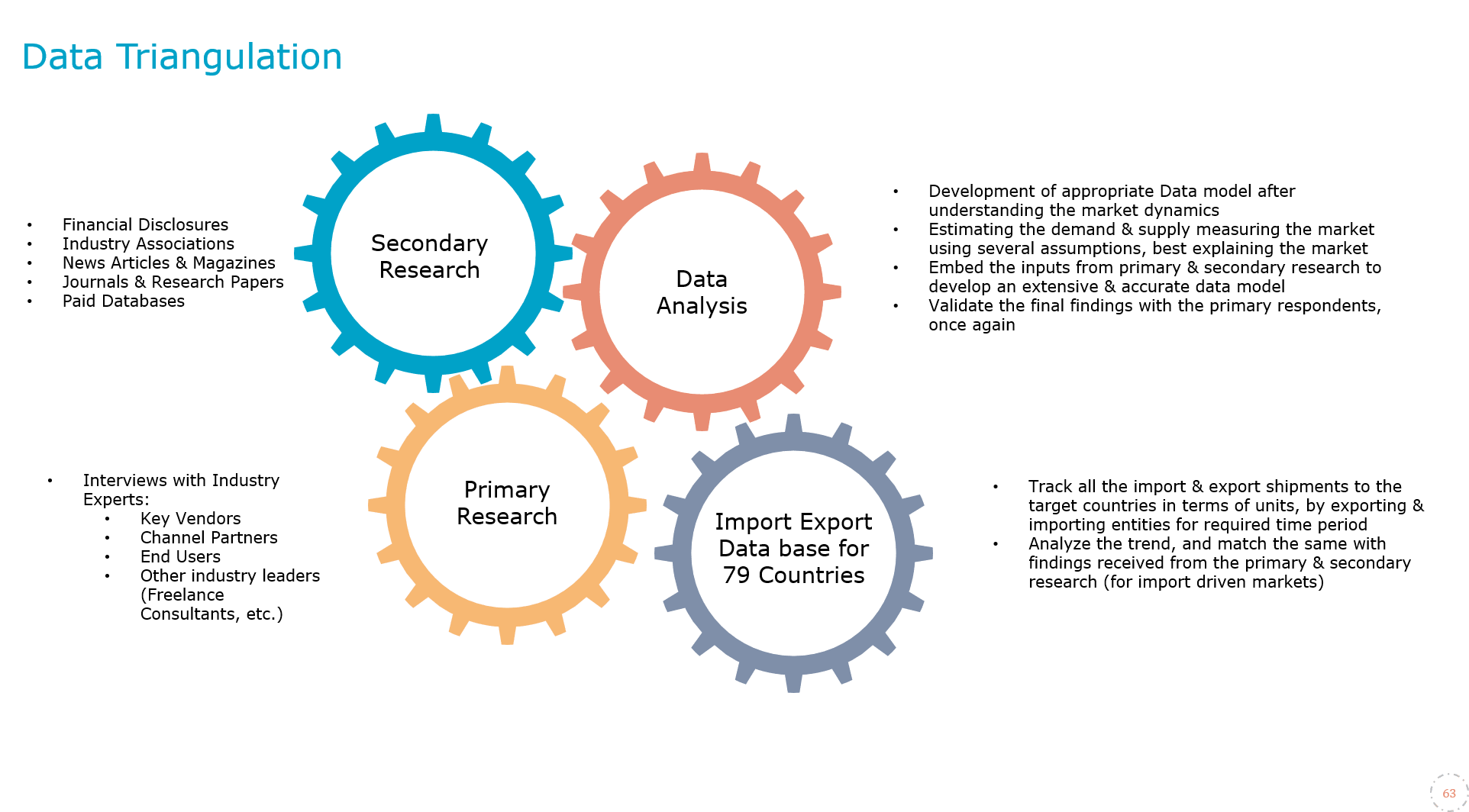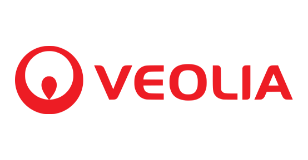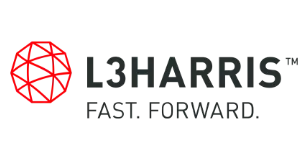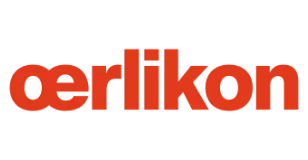
Global Bio-Polyethylene Market Research Report: Forecast (2024-2030)
Bio-Polyethylene Market Report - By Type (HDPE (High-Density Polyethylene), LDPE (Low-Density Polyethylene), LLDPE (Linear Low-Density Polyethylene)), By Raw Material (Sugarcane, ...Sugarbeet, Corn, Other Biomass (Cellulose, Algae, etc.)), By End User (Food and Beverages, Agriculture & Animal Feed, Cosmetics & Personal Care, Textile, Others (Pharmaceuticals, Construction, etc.)), Others Read more
- Food & Beverages
- Apr 2024
- Pages 193
- Report Format: PDF, Excel, PPT
Market Definition
Bio-polyethylene is a sustainable and environmentally friendly alternative to traditional polyethylene plastic, derived from renewable biomass sources such as sugarcane, corn, or other plant materials. Unlike conventional polyethylene, which is produced from fossil fuels like petroleum, bio-polyethylene is manufactured using bio-based ethylene obtained from biomass feedstocks through processes such as fermentation or chemical conversion. It finds a wide range of applications across industries such as packaging, agriculture, automotive, consumer goods, and construction, where its versatility, durability, and sustainability make it an attractive choice for manufacturers and consumers alike.
Market Insights & Analysis: Global Bio-Polyethylene Market (2024-30):
The Global Bio-Polyethylene Market size is estimated to grow at a CAGR of around 19% during the forecast period, i.e., 2024-30. The market growth imputes increasing awareness about environmental sustainability and the need for renewable and bio-based alternatives. Bio-polyethylene presents a sustainable and environmentally friendly alternative to conventional fossil fuel-derived counterparts. Moreover, issues such as escalating plastic pollution and climate change are catalyzing a notable shift towards bio-polyethylene across diverse sectors. Regulatory pressures aimed at curbing single-use plastics and fostering sustainable practices have spurred governments to incentivize the adoption of biodegradable alternatives. For instance,
In 2022, the government of India banned the manufacturing, distribution, stocking, sale, and use of selected 19 single-use plastic items in the country owing to rising plastic pollution.
| Report Coverage | Details |
|---|---|
| Study Period | Historical Data: 2019-22 |
| Base Year: 2023 | |
| Forecast Period: 2024-30 | |
| CAGR (2024-2030) | 19% |
| Regions Covered | North America: The US, Canada, Mexico |
| South America: Brazil, Argentina, Rest of South America | |
| Europe: Germany, The UK, France, Italy, Spain, Rest of Europe | |
| Asia-Pacific: China, Japan, India, South Korea, Australia, Rest of Asia-Pacific | |
| Middle East & Africa: Saudi Arabia, The UAE, South Africa, Rest of Middle East & Africa | |
| Key Companies Profiled | SABIC, Barskem S.A., LyondellBasell Industries N.V., FKuR Kunststoff GmbH, New Energy Blue, Toyota Tsusho Pvt. Ltd., Avery Dennison, Novamont S.P.A., Biome Bioplastics, Iwatani Corporation, Danimer Scientific, and others |
| Unit Denominations | USD Million/Billion |
Concurrently, corporate sustainability initiatives are pushing companies to reevaluate their material choices, with many prioritizing bio-based solutions to enhance their environmental credentials. Moreover, heightened consumer awareness and demand for eco-friendly products are steering industries towards bio-polyethylene as a viable substitute for conventional plastics.
Moreover, the rising use of bio-polyethylene across various end-user industries such as food and beverages, automotive, agriculture, etc., is further propelling its adoption globally, driving sustainability and innovation. The stringent regulations and consumer demand for eco-friendly packaging solutions lead companies to embrace bio-polyethylene for products ranging from food packaging to shipping materials. Similarly, the automotive industry increasingly turns to bio-polyethylene for interior components and exterior panels to reduce carbon emissions and enhance recyclability. Additionally, consumer goods manufacturers are incorporating bio-polyethylene into products such as bottles, toys, and cosmetic packaging to meet the growing demand for sustainable options, propelling its adoption globally and augmenting the growth & expansion of the Global Bio-Polyethylene Market.

Global Bio-Polyethylene Market Driver:
The Growing Demand for Sustainable Packaging in the Food and Beverage Sector to Drive Market Growth – The growing population and urbanization have significantly increased the demand for packaged food and beverage products across the globe. Moreover, the rising middle class in developing countries has further surged the adoption of convenience food products packaged in various polyethylene materials. However, the surging sustainability and environmental awareness among consumers across the globe are creating demand for bio-based packaging solutions in the food and beverage sector to avoid the contact of food products with harmful single-use plastics. Moreover, heightened environmental consciousness among consumers has led to a preference for packaging that minimizes waste and reduces carbon footprints. Additionally, regulatory measures aimed at curbing single-use plastics have incentivized companies to explore eco-friendly alternatives. For Instance,
- In 2022, Pepsico Europe announced the use of bio-based plastics for the packaging of its food products, such as chips, crisps, etc.
Furthermore, e-commerce and home delivery services have amplified concerns about excessive packaging waste, prompting the industry to seek out more sustainable packaging options. As a result, there is a growing shift towards bio-polyethylene packaging for various food and beverage products, ranging from bottles and containers to films and wraps. This surge in demand underscores the pivotal role of bio-polyethylene in addressing sustainability challenges within the food and beverage industry while meeting consumer preferences for eco-friendly packaging options, proliferating the growth & expansion of the Global Bio-Polyethylene Market.
Global Bio-Polyethylene Market Opportunity:
Surging Government Initiatives in the Agriculture Sector to Proliferate Market Growth – Governments worldwide are increasingly implementing initiatives to address environmental concerns and promote sustainability in the agriculture sector. Countries such as India, Brazil, the United States, etc., are making efforts and framing initiatives to reduce plastic waste, enhance recycling infrastructure, and encourage the adoption of eco-friendly practices in the agriculture sector. For instance,
- In 2022, the government of Brazil formulated the National Low Carbon Agriculture Plan, focusing on the use of bio-inputs, bio-fertilizers, renewable energy systems, and power generation from biogas and bio-methane.
These initiatives, including subsidies, incentives, and regulations, are encouraging the adoption of biodegradable materials in agricultural practices. Governments supporting the use of bio-polyethylene mulch films in crop production are offering benefits such as improved soil health, reduced plastic waste, and decreased reliance on conventional plastics derived from non-renewable sources. Bio-polyethylene-based agricultural products align with the growing consumer demand for organic and eco-friendly products. By incentivizing the adoption of bio-polyethylene in agriculture, governments are not only promoting sustainable farming practices but also creating opportunities for the growth of the Global Bio-Polyethylene Market.
Global Bio-Polyethylene Market Challenge:
Uncertainty Associated with the Availability of Feedstock to Produce Bio-Polyethylene to Impede Market Growth – Fluctuations in agricultural yields due to unpredictable weather patterns, including extreme droughts, floods, and heatwaves, lead to disruptions in crop yields and affect the availability of feedstock. Moreover, the rising incidence of pests and diseases results in the disruption of the supply of biomass feedstock such as sugarcane, corn, or other plant-based materials, leading to fluctuations in the overall price.
Additionally, competition for land between food crops and feedstock crops raises concerns about the sustainability and ethical implications of bio-polyethylene production, further raising concerns about the availability of feedstocks for bio-polyethylene production. As a result, fluctuations in commodity prices and market demand for feedstock crops like sugarcane, corn, or soybeans impact their availability for bio-polyethylene production, posing challenges in the production and adoption of bio-polyethylene and ultimately hampering the growth & development of the Global Bio-Polyethylene Market.
Global Bio-Polyethylene Market Trend:
Escalating Inclination Towards Sustainable and Eco-Friendly Clothing Among Consumers Surging Adoption of Bio-Polyethylene – Consumers worldwide are increasingly prioritizing renewable and sustainable clothing options, driven by growing environmental awareness and concerns about the fashion industry's impact on the planet. Factors such as plastic pollution, water consumption, and carbon emissions associated with traditional textile production processes are prompting individuals to seek eco-friendly alternatives.
Moreover, consumers are demanding transparency and accountability from clothing brands regarding their supply chains and manufacturing practices, pushing companies to adopt sustainable initiatives and certifications. Bio-polyethylene, derived from renewable biomass sources, offers a sustainable solution for clothing and textile applications, reducing reliance on fossil fuels and mitigating environmental impact. Additionally, the biodegradability of bio-polyethylene aligns with consumer preferences for products that have minimal end-of-life impact. As a result, clothing brands and manufacturers such as Quince, Levis, etc. are integrating sustainable materials into their collections, offering eco-conscious consumers a wide range of sustainable clothing options. For instance,
- In 2023, Levi's launched its Autumn-Winter 2023 WellThread collection, which is a sustainable line made with plant-based dyes and pigments.
With manufacturers incorporating sustainable initiatives, the demand for bio-polyethylene is surging rapidly to manufacture environment-friendly clothing, which is emerging as a significant trend in the Global Bio-Polyethylene Market.
Global Bio-Polyethylene Market (2024-30): Segmentation Analysis
The Global Bio-Polyethylene Market study of MarkNtel Advisors evaluates & highlights the major trends and influencing factors in each segment. It includes predictions for the period 2024–2030 at the global level. According to the analysis, the market has been further classified as:
Based on End User:
- Food and Beverages
- Agriculture & Animal Feed
- Cosmetics & Personal Care
- Textile
- Others (Pharmaceuticals, Construction, etc.)
The cosmetics & personal care segment held a significant market share in the Global Bio-Polyethylen Market. Increasing consumer awareness of environmental issues, such as plastic pollution, has prompted a shift towards eco-friendly alternatives in the cosmetic & personal care industry. Regulatory pressures and corporate sustainability initiatives are further incentivizing companies to adopt sustainable packaging practices, such as bans on single-use plastics.
Additionally, heightened consumer scrutiny of ingredients and product sourcing extends to packaging materials, prompting brands to prioritize sustainability throughout their supply chains. Sustainable packaging not only aligns with consumer values but also enhances brand image and loyalty. As a result, cosmetics and personal care companies are increasingly investing in biodegradable and recyclable packaging solutions to meet the growing demand for sustainable products while reducing their environmental footprint. For instance,
- In 2023, Swiss packaging provider Hoffmann Neopac launched a cosmetic tube containing up to 60% food-safe PCR material in the shoulder and cap of the pack.
Bio-polyethylene, derived from renewable biomass sources, offers a biodegradable and recyclable option that aligns with the industry's sustainability goals. Additionally, the versatility and compatibility of bio-polyethylene with various cosmetic formulations make it an attractive choice for packaging a wide range of products, from creams and lotions to makeup and skincare items, augmenting its adoption in the cosmetic and personal care industry and proliferating market growth.
Based on Raw Material:
- Sugarcane
- Sugarbeet
- Corn
- Other Biomass (Cellulose, Algae, etc.)
The sugarcane segment is expected to hold a significant share of the market owing to its high content of fermentable sugars, making it a prime source for bio-based polyethylene production. The abundance of sugarcane as a raw material ensures a steady and reliable supply chain for manufacturers, minimizing production costs and enhancing profitability. Additionally, sugarcane cultivation is widespread across various regions globally, offering accessibility and scalability to meet the increasing demand for bio-polyethylene.
Moreover, advancements in agricultural practices and biotechnological innovations have bolstered sugarcane yields, further reinforcing its position as the preferred feedstock for bio-polyethylene. Furthermore, the established infrastructure and expertise within the sugarcane industry enable efficient extraction and conversion processes, streamlining the production of high-quality bio-polyethylene. Thus, the easy availability, efficient supply chain, and cost-effective nature of sugarcane compared to other raw materials are augmenting its adoption in the market.
Global Bio-Polyethylene Market (2024-30): Regional Projections
Geographically, the Global Bio-Polyethylene Market expands across:
- North America
- South America
- Europe
- The Middle East & Africa
- Asia-Pacific
Europe is expected to hold a significant share of the Global Bio-Polyethylene Market as the region boasts robust industrial infrastructure and manufacturing capabilities for Bio-Polyethylene. In addition, Europe boasts a burgeoning consumer market with a growing preference for eco-friendly products, driving demand for bio-based alternatives across various sectors, including textiles, automotive, and cosmetics. Countries such as Germany, France, the UK, etc. are significant manufacturers of cosmetics and personal care products, and surging sustainability initiatives in the sector are prompting manufacturers to adopt bio-polyethylene in the packaging of these products.
Furthermore, stringent environmental regulations and sustainability goals set by European governments encourage the adoption of bio-based materials, including bio-polyethylene, across various industries. These regulations create a conducive environment for investment and innovation in the bio-polyethylene sector. Additionally, a strong emphasis on circular economy principles and waste management initiatives in Europe further propels the demand for bio-polyethylene as a sustainable alternative to conventional plastics. Thus, the growing demand for bio-polyethylene owing to government policies, burgeoning consumer awareness, and circular economy principles is collectively augmenting the demand for bio-polyethylene in the region, boosting market growth.
Global Bio-Polyethylene Industry Recent Development:
- In 2023: Barskem announced about a 30% increase in the production capacity of its bio-based ethylene plant, located in the Petrochemical Complex of Triunfo, Rio Grande do Sul, Brazil.
Gain a Competitive Edge with Our Global Bio-Polyethylene Market Report
- Global Bio-Polyethylene Market Report by Markntel Advisors provides a detailed & thorough analysis of market size, growth rate, competitive landscape, and key players. This comprehensive analysis helps businesses gain a holistic understanding of market dynamics & make informed decisions.
- This report also highlights current market trends & future projections, allowing businesses to identify emerging opportunities & potential challenges. By understanding market forecasts, companies can align their strategies & stay ahead of the competition.
- Global Bio-Polyethylene Market Report aids in assessing & mitigating risks associated with entering or operating in the market. By understanding market dynamics, regulatory frameworks, and potential challenges, businesses can develop strategies to minimize risks & optimize their operations.
Frequently Asked Questions
- Market Segmentation
- Introduction
- Product Definition
- Research Process
- Assumptions
- Executive Summary
- Global Bio-Polyethylene Market Trends & Development
- Global Bio-Polyethylene Market Dynamics
- Drivers
- Challenges
- Global Bio-Polyethylene Market Value Chain Analysis
- Global Bio-Polyethylene Market Regulations, Policies & Standards
- Global Bio-Polyethylene Market Hotspot & Opportunities
- Global Bio-Polyethylene Market Analysis, 2019-2030F
- Market Size & Analysis
- By Revenues (USD Million)
- By Quantity Sold (Thousand Tons)
- Market Share & Analysis
- By Type
- HDPE (High-Density Polyethylene)- Market Size & Forecast 2019-2030F (Thousand Tons)
- LDPE (Low-Density Polyethylene)- Market Size & Forecast 2019-2030F (Thousand Tons)
- LLDPE (Linear Low-Density Polyethylene) - Market Size & Forecast 2019-2030F (Thousand Tons)
- By Raw Material
- Sugarcane- Market Size & Forecast 2019-2030F (Thousand Tons)
- Sugarbeet- Market Size & Forecast 2019-2030F (Thousand Tons)
- Corn- Market Size & Forecast 2019-2030F (Thousand Tons)
- Other Biomass (Cellulose, Algae, etc.) - Market Size & Forecast 2019-2030F (Thousand Tons)
- By End User
- Food and Beverages- Market Size & Forecast 2019-2030F (Thousand Tons)
- Agriculture & Animal Feed- Market Size & Forecast 2019-2030F (Thousand Tons)
- Cosmetics & Personal Care- Market Size & Forecast 2019-2030F (Thousand Tons)
- Textile - Market Size & Forecast 2019-2030F (Thousand Tons)
- Others (Pharmaceuticals, Construction, etc.)- Market Size & Forecast 2019-2030F (Thousand Tons)
- By Region
- North America
- South America
- Europe
- The Middle East & Africa
- Asia-Pacific
- By Company
- Competition Characteristics
- Market Share of Leading Companies
- By Type
- Market Size & Analysis
- North America Bio-Polyethylene Market Analysis, 2019-2030F
- Market Size & Analysis
- By Revenues (USD Million)
- By Quantity Sold (Thousand Tons)
- Market Share & Analysis
- By Type- Market Size & Forecast 2019-2030F (Thousand Tons)
- By Raw Material- Market Size & Forecast 2019-2030F (Thousand Tons)
- By End User- Market Size & Forecast 2019-2030F (Thousand Tons)
- By Country
- The US
- Canada
- Mexico
- The US Bio-Polyethylene Market Analysis, 2019-2030F
- Market Size & Analysis
- By Revenues (USD Million)
- By Quantity Sold (Thousand Tons)
- Market Share & Analysis
- By Type- Market Size & Forecast 2019-2030F (Thousand Tons)
- By End User- Market Size & Forecast 2019-2030F (Thousand Tons)
- Market Size & Analysis
- Canada Bio-Polyethylene Market Analysis, 2019-2030F
- Market Size & Analysis
- By Revenues (USD Million)
- By Quantity Sold (Thousand Tons)
- Market Share & Analysis
- By Type- Market Size & Forecast 2019-2030F (Thousand Tons)
- By End User- Market Size & Forecast 2019-2030F (Thousand Tons)
- Market Size & Analysis
- Mexico Bio-Polyethylene Market Analysis, 2019-2030F
- Market Size & Analysis
- By Revenues (USD Million)
- By Quantity Sold (Thousand Tons)
- Market Share & Analysis
- By Type- Market Size & Forecast 2019-2030F (Thousand Tons)
- By End User- Market Size & Forecast 2019-2030F (Thousand Tons)
- Market Size & Analysis
- Market Size & Analysis
- South America Bio-Polyethylene Market Analysis, 2019-2030F
- Market Size & Analysis
- By Revenues (USD Million)
- By Quantity Sold (Thousand Tons)
- Market Share & Analysis
- By Type- Market Size & Forecast 2019-2030F (Thousand Tons)
- By Raw Material- Market Size & Forecast 2019-2030F (Thousand Tons)
- By End User- Market Size & Forecast 2019-2030F (Thousand Tons)
- By Country
- Brazil
- Argentina
- Rest of South America
- Brazil Bio-Polyethylene Market Analysis, 2019-2030F
- Market Size & Analysis
- By Revenues (USD Million)
- By Quantity Sold (Thousand Tons)
- Market Share & Analysis
- By Type- Market Size & Forecast 2019-2030F (Thousand Tons)
- By End User- Market Size & Forecast 2019-2030F (Thousand Tons)
- Market Size & Analysis
- Argentina Bio-Polyethylene Market Analysis, 2019-2030F
- Market Size & Analysis
- By Revenues (USD Million)
- By Quantity Sold (Thousand Tons)
- Market Share & Analysis
- By Type- Market Size & Forecast 2019-2030F (Thousand Tons)
- By End User- Market Size & Forecast 2019-2030F (Thousand Tons)
- Market Size & Analysis
- Market Size & Analysis
- Europe Bio-Polyethylene Market Analysis, 2019-2030F
- Market Size & Analysis
- By Revenues (USD Million)
- By Quantity Sold (Thousand Tons)
- Market Share & Analysis
- By Type- Market Size & Forecast 2019-2030F (Thousand Tons)
- By Raw Material- Market Size & Forecast 2019-2030F (Thousand Tons)
- By End User- Market Size & Forecast 2019-2030F (Thousand Tons)
- By Country
- The UK
- Germany
- France
- Italy
- Spain
- Rest of Europe
- The UK Bio-Polyethylene Market Analysis, 2019-2030F
- Market Size & Analysis
- By Revenues (USD Million)
- By Quantity Sold (Thousand Tons)
- Market Share & Analysis
- By Type- Market Size & Forecast 2019-2030F (Thousand Tons)
- By End User- Market Size & Forecast 2019-2030F (Thousand Tons)
- Market Size & Analysis
- Germany Bio-Polyethylene Market Analysis, 2019-2030F
- Market Size & Analysis
- By Revenues (USD Million)
- By Quantity Sold (Thousand Tons)
- Market Share & Analysis
- By Type- Market Size & Forecast 2019-2030F (Thousand Tons)
- By End User- Market Size & Forecast 2019-2030F (Thousand Tons)
- Market Size & Analysis
- France Bio-Polyethylene Market Analysis, 2019-2030F
- Market Size & Analysis
- By Revenues (USD Million)
- By Quantity Sold (Thousand Tons)
- Market Share & Analysis
- By Type- Market Size & Forecast 2019-2030F (Thousand Tons)
- By End User- Market Size & Forecast 2019-2030F (Thousand Tons)
- Market Size & Analysis
- Italy Bio-Polyethylene Market Analysis, 2019-2030F
- Market Size & Analysis
- By Revenues (USD Million)
- By Quantity Sold (Thousand Tons)
- Market Share & Analysis
- By Type- Market Size & Forecast 2019-2030F (Thousand Tons)
- By End User- Market Size & Forecast 2019-2030F (Thousand Tons)
- Market Size & Analysis
- Spain Bio-Polyethylene Market Analysis, 2019-2030F
- Market Size & Analysis
- By Revenues (USD Million)
- By Quantity Sold (Thousand Tons)
- Market Share & Analysis
- By Type- Market Size & Forecast 2019-2030F (Thousand Tons)
- By End User- Market Size & Forecast 2019-2030F (Thousand Tons)
- Market Size & Analysis
- Market Size & Analysis
- The Middle East & Africa Bio-Polyethylene Market Analysis, 2019-2030F
- Market Size & Analysis
- By Revenues (USD Million)
- By Quantity Sold (Thousand Tons)
- Market Share & Analysis
- By Type- Market Size & Forecast 2019-2030F (Thousand Tons)
- By Raw Material- Market Size & Forecast 2019-2030F (Thousand Tons)
- By End User- Market Size & Forecast 2019-2030F (Thousand Tons)
- By Country
- Saudi Arabia
- The UAE
- South Africa
- Rest of the Middle East & Africa
- Saudi Arabia Bio-Polyethylene Market Analysis, 2019-2030F
- Market Size & Analysis
- By Revenues (USD Million)
- By Quantity Sold (Thousand Tons)
- Market Share & Analysis
- By Type- Market Size & Forecast 2019-2030F (Thousand Tons)
- By End User- Market Size & Forecast 2019-2030F (Thousand Tons)
- Market Size & Analysis
- The UAE Bio-Polyethylene Market Analysis, 2019-2030F
- Market Size & Analysis
- By Revenues (USD Million)
- By Quantity Sold (Thousand Tons)
- Market Share & Analysis
- By Type- Market Size & Forecast 2019-2030F (Thousand Tons)
- By End User- Market Size & Forecast 2019-2030F (Thousand Tons)
- Market Size & Analysis
- South Africa Bio-Polyethylene Market Analysis, 2019-2030F
- Market Size & Analysis
- By Revenues (USD Million)
- By Quantity Sold (Thousand Tons)
- Market Share & Analysis
- By Type- Market Size & Forecast 2019-2030F (Thousand Tons)
- By End User- Market Size & Forecast 2019-2030F (Thousand Tons)
- Market Size & Analysis
- Market Size & Analysis
- Asia Pacific Bio-Polyethylene Market Analysis, 2019-2030F
- Market Size & Analysis
- By Revenues (USD Million)
- By Quantity Sold (Thousand Tons)
- Market Share & Analysis
- By Type- Market Size & Forecast 2019-2030F (Thousand Tons)
- By Raw Material- Market Size & Forecast 2019-2030F (Thousand Tons)
- By End User- Market Size & Forecast 2019-2030F (Thousand Tons)
- By Country
- China
- Japan
- India
- South Korea
- Australia
- Rest of Asia Pacific
- China Bio-Polyethylene Market Analysis, 2019-2030F
- Market Size & Analysis
- By Revenues (USD Million)
- By Quantity Sold (Thousand Tons)
- Market Share & Analysis
- By Type- Market Size & Forecast 2019-2030F (Thousand Tons)
- By End User- Market Size & Forecast 2019-2030F (Thousand Tons)
- Market Size & Analysis
- Japan Bio-Polyethylene Market Analysis, 2019-2030F
- Market Size & Analysis
- By Revenues (USD Million)
- By Quantity Sold (Thousand Tons)
- Market Share & Analysis
- By Type- Market Size & Forecast 2019-2030F (Thousand Tons)
- By End User- Market Size & Forecast 2019-2030F (Thousand Tons)
- Market Size & Analysis
- India Bio-Polyethylene Market Analysis, 2019-2030F
- Market Size & Analysis
- By Revenues (USD Million)
- By Quantity Sold (Thousand Tons)
- Market Share & Analysis
- By Type- Market Size & Forecast 2019-2030F (Thousand Tons)
- By End User- Market Size & Forecast 2019-2030F (Thousand Tons)
- Market Size & Analysis
- South Korea Bio-Polyethylene Market Analysis, 2019-2030F
- Market Size & Analysis
- By Revenues (USD Million)
- By Quantity Sold (Thousand Tons)
- Market Share & Analysis
- By Type- Market Size & Forecast 2019-2030F (Thousand Tons)
- By End User- Market Size & Forecast 2019-2030F (Thousand Tons)
- Market Size & Analysis
- Australia Bio-Polyethylene Market Analysis, 2019-2030F
- Market Size & Analysis
- By Revenues (USD Million)
- By Quantity Sold (Thousand Tons)
- Market Share & Analysis
- By Type- Market Size & Forecast 2019-2030F (Thousand Tons)
- By End User- Market Size & Forecast 2019-2030F (Thousand Tons)
- Market Size & Analysis
- Market Size & Analysis
- Global Bio-Polyethylene Market Strategic Imperatives for Success & Growth
- Competitive Outlook
- Company Profiles
- SABIC
- Business Description
- Product Portfolio
- Strategic Alliances or Partnerships
- Recent Developments
- Financial Details
- Others
- Barskem S.A.
- Business Description
- Product Portfolio
- Strategic Alliances or Partnerships
- Recent Developments
- Financial Details
- Others
- LyondellBasell Industries N.V.
- Business Description
- Product Portfolio
- Strategic Alliances or Partnerships
- Recent Developments
- Financial Details
- Others
- FKuR Kunststoff GmbH
- Business Description
- Product Portfolio
- Strategic Alliances or Partnerships
- Recent Developments
- Financial Details
- Others
- New Energy Blue
- Business Description
- Product Portfolio
- Strategic Alliances or Partnerships
- Recent Developments
- Financial Details
- Others
- Toyota Tsusho Pvt. Ltd.
- Business Description
- Product Portfolio
- Strategic Alliances or Partnerships
- Recent Developments
- Financial Details
- Others
- Avery Dennison
- Business Description
- Product Portfolio
- Strategic Alliances or Partnerships
- Recent Developments
- Financial Details
- Others
- Novamont S.P.A.
- Business Description
- Product Portfolio
- Strategic Alliances or Partnerships
- Recent Developments
- Financial Details
- Others
- Biome Bioplastics
- Business Description
- Product Portfolio
- Strategic Alliances or Partnerships
- Recent Developments
- Financial Details
- Others
- Iwatani Corporation
- Business Description
- Product Portfolio
- Strategic Alliances or Partnerships
- Recent Developments
- Financial Details
- Others
- Danimer Scientific
- Business Description
- Product Portfolio
- Strategic Alliances or Partnerships
- Recent Developments
- Financial Details
- Others
- Others
- SABIC
- Company Profiles
- Disclaimer
MarkNtel Advisors follows a robust and iterative research methodology designed to ensure maximum accuracy and minimize deviation in market estimates and forecasts. Our approach combines both bottom-up and top-down techniques to effectively segment and quantify various aspects of the market. A consistent feature across all our research reports is data triangulation, which examines the market from three distinct perspectives to validate findings. Key components of our research process include:
1. Scope & Research Design At the outset, MarkNtel Advisors define the research objectives and formulate pertinent questions. This phase involves determining the type of research—qualitative or quantitative—and designing a methodology that outlines data collection methods, target demographics, and analytical tools. They also establish timelines and budgets to ensure the research aligns with client goals.
2. Sample Selection and Data Collection In this stage, the firm identifies the target audience and determines the appropriate sample size to ensure representativeness. They employ various sampling methods, such as random or stratified sampling, based on the research objectives. Data collection is carried out using tools like surveys, interviews, and observations, ensuring the gathered data is reliable and relevant.
3. Data Analysis and Validation Once data is collected, MarkNtel Advisors undertake a rigorous analysis process. This includes cleaning the data to remove inconsistencies, employing statistical software for quantitative analysis, and thematic analysis for qualitative data. Validation steps are taken to ensure the accuracy and reliability of the findings, minimizing biases and errors.

4. Data Forecast and FinalizationThe final phase involves forecasting future market trends based on the analyzed data. MarkNtel Advisors utilize predictive modeling and time series analysis to anticipate market behaviors. The insights are then compiled into comprehensive reports, featuring visual aids like charts and graphs, and include strategic recommendations to inform client decision-making









